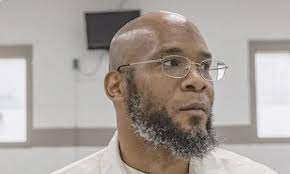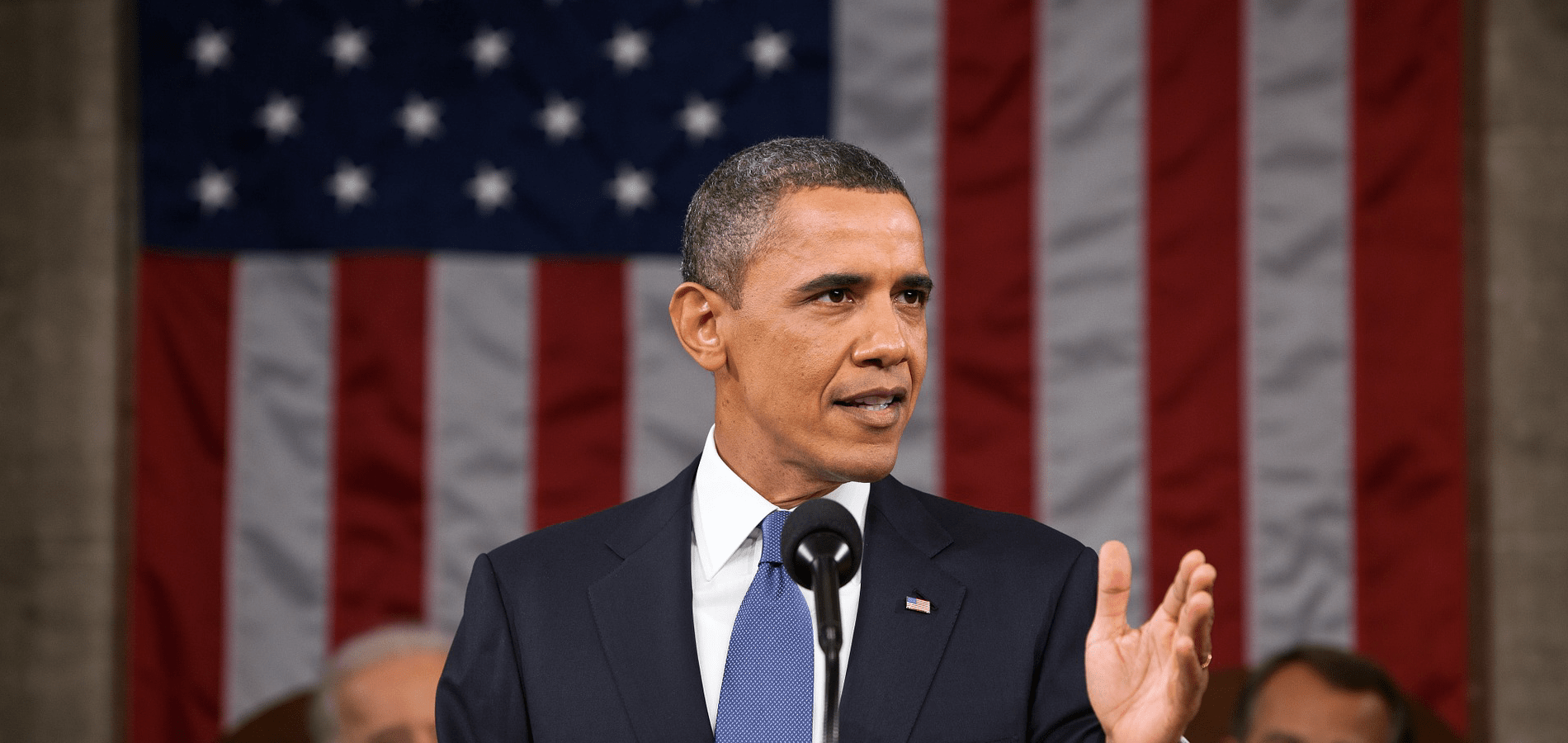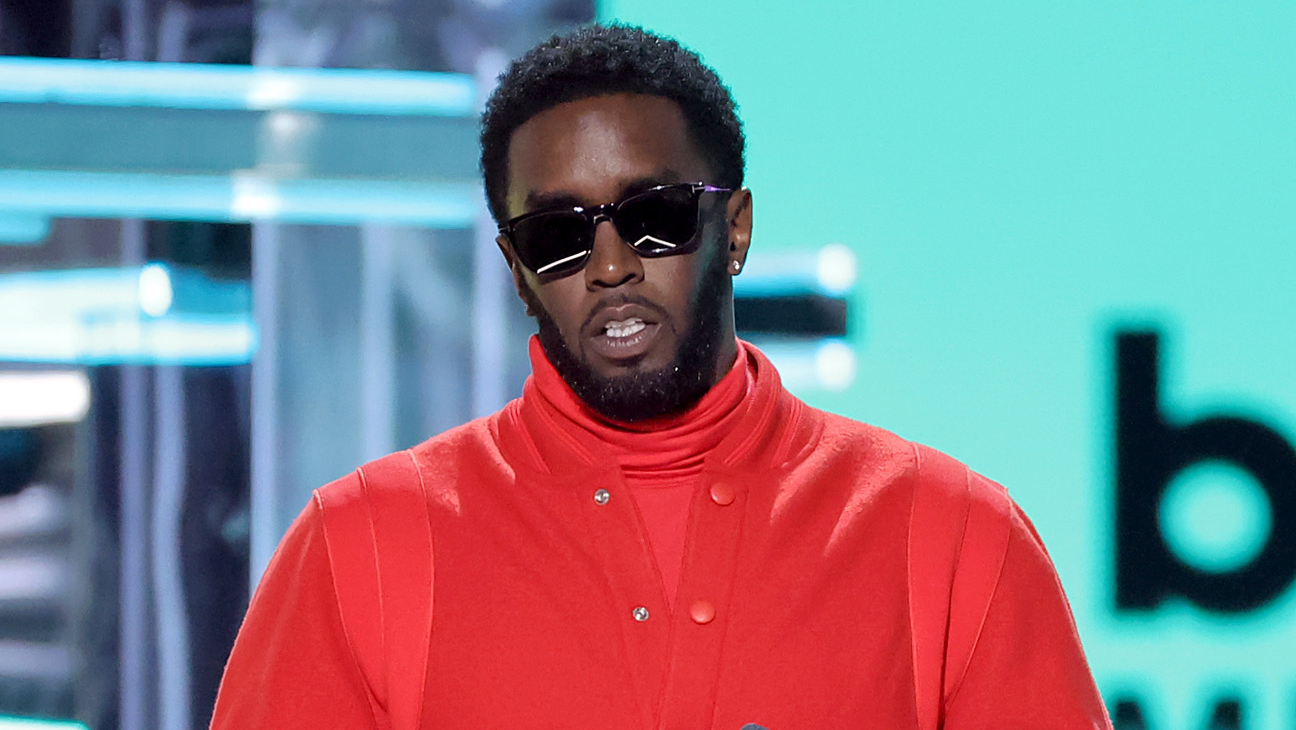Archives
Marcellus Williams: A Controversial Case of Justice and Doubt

The case of Marcellus Williams has become one of the most talked-about examples of potential wrongful conviction in recent U.S. legal history. As the justice system increasingly comes under scrutiny, Williams’s story highlights the intersection of criminal law, forensic science, and public opinion. His case has ignited debates about the death penalty, the reliability of DNA evidence, and the potential for irreversible errors in capital punishment cases.
Who is Marcellus Williams?
Marcellus Williams is a Missouri man convicted in 2001 for the 1998 murder of Felicia Gayle, a former St. Louis Post-Dispatch reporter. Gayle was found stabbed 43 times in her home, and Williams was arrested months later after an informant came forward. He was tried, found guilty, and sentenced to death. But from the beginning, the case against him drew concerns — and over two decades later, it still fuels national discussions.
The Role of DNA in the Marcellus Williams Case
One of the most pivotal aspects of the Marcellus Williams case centers around DNA evidence — or, more precisely, the lack of his DNA at the crime scene. In 2017, just hours before Williams was scheduled for execution, then-Governor Eric Greitens issued a stay of execution and appointed a board to investigate the case. Why? Because recent DNA testing found that the DNA on the murder weapon — the knife used to kill Felicia Gayle — did not match Williams.
This revelation raised a fundamental question: Can the justice system afford to move forward with an execution when key evidence excludes the defendant?
Witness Testimony vs. Physical Evidence
At the time of his conviction, the case against Marcellus Williams largely relied on witness testimony. Two individuals — a jailhouse informant and a former girlfriend — claimed that Williams confessed to them. However, both had incentives to testify: reduced sentences or financial rewards. There was no fingerprint or physical evidence directly linking Williams to the crime scene.
In contrast, forensic evidence suggested someone else handled the murder weapon. Despite this, Williams remained on death row — an unsettling reality that has prompted legal scholars, activists, and even some politicians to call for a reevaluation of the justice system.
Public Outcry and Media Attention
As news of the DNA results spread, so did public outrage. Human rights organizations like the Innocence Project, as well as celebrities and media outlets, began advocating for Marcellus Williams, arguing that executing someone whose DNA is not found on the murder weapon is not just legally questionable but morally indefensible.
The case has since become a symbol for a broader issue — how often does the system get it wrong? And what mechanisms are in place to correct those errors, especially when a life is on the line?
The Death Penalty and the Case of Marcellus Williams
The Marcellus Williams case has also reignited debates around the death penalty in the United States. Critics argue that his case highlights how easily someone can be wrongfully convicted and how final and irreversible the punishment of death truly is. If the state executes an innocent person, there is no coming back from that mistake.
Supporters of Williams point out that his conviction was based on circumstantial evidence and incentivized testimonies, with no hard physical evidence tying him to the scene. The presence of someone else’s DNA on the murder weapon introduces significant reasonable doubt, yet he continues to face execution.
Legal Developments and Where the Case Stands Now
In recent years, Missouri’s courts have been slow to address the implications of the DNA evidence. In 2023, a judge dismissed efforts to overturn the conviction, ruling that the DNA did not conclusively exonerate Marcellus Williams. However, many argue that the presence of unknown DNA should at least warrant a new trial or further investigation.
The special board appointed in 2017 has yet to release a final recommendation, and the legal community continues to watch the case closely. Advocates believe the board’s findings could become a turning point, not only for Williams but for broader discussions on wrongful convictions and the death penalty.
Lessons from the Marcellus Williams Case
The ongoing legal battle involving Marcellus Williams teaches us several critical lessons about the justice system:
-
Reliance on Witness Testimony: Testimonies from incentivized witnesses can be unreliable and should be scrutinized closely in capital cases.
-
Importance of Forensic Evidence: Modern forensic methods, like DNA testing, can change the narrative — even decades after a conviction.
-
Potential for Wrongful Execution: Williams’s case reminds us that the risk of executing an innocent person is real and demands procedural safeguards.
-
Judicial Accountability: When new evidence emerges, the legal system must be willing to reexamine old verdicts, even if doing so is politically or legally inconvenient.
The Human Side of Marcellus Williams
While legal facts dominate headlines, it’s important not to forget the human side of this case. Marcellus Williams has spent over two decades on death row, living under the shadow of execution. His family, friends, and supporters continue to advocate for justice, not just for him but for others in similar situations.
Williams maintains his innocence to this day, and his case has become a rallying cry for those who believe the justice system must be more transparent, fair, and receptive to new evidence.
Conclusion: Why Marcellus Williams Matters
The story of Marcellus Williams is more than just a legal case; it is a reflection of systemic flaws that continue to plague the criminal justice system in the United States. Whether or not one believes in his innocence, the DNA evidence, questionable testimony, and the lingering doubt all point to a critical conclusion: justice must be accurate, not just swift.
His case reminds us that due process must evolve with new technology, and that no legal system — no matter how advanced — is immune to mistakes. Until cases like his are thoroughly and fairly reviewed, the debate over wrongful convictions and capital punishment will continue to shape American legal and political discourse.
Archives
Pinterest : Understanding Your Audience and Performance

Pinterest is more than just a platform for sharing beautiful images and clever DIY projects. It’s a vibrant visual search engine that connects ideas with inspiration, making it an essential tool for businesses and creators alike. With over 450 million active users each month, understanding how to engage this audience is crucial for standing out in the crowded digital landscape.
But here’s the catch: simply pinning pretty pictures isn’t enough. To truly succeed on Pinterest, you need to know who your audience is and what they’re looking for. This knowledge can help you create content that resonates deeply and drives engagement.
As we explore the nuances of Pinterest today, we’ll uncover strategies to not only understand your audience but also track your performance effectively. Whether you’re a seasoned marketer or just starting out on this visually-driven platform, knowing how to tailor your approach can make all the difference in achieving success on Pinterest.
The Importance of Understanding Your Audience on Pinterest
Understanding your audience on Pinterest is crucial for any brand or creator. This platform thrives on visuals, and knowing who you’re speaking to can shape your content strategy effectively.
Tailoring your pins to fit the interests and preferences of your audience increases engagement. When users see content that resonates with them, they are more likely to save it and share it.
Pinterest serves as a discovery tool, where users seek inspiration for their everyday lives. By understanding what drives their curiosity, brands can create meaningful connections through targeted boards and pin designs.
Audience insights also help in honing messaging strategies. Knowing demographics such as age groups, location, and interests allows you to craft relatable narratives that speak directly to potential followers.
The landscape of Pinterest continually evolves. Keeping an ear to the ground about user behavior ensures you remain relevant amidst shifting trends.
How to Identify and Analyze Your Audience on Pinterest
To identify and analyze your audience on Pinterest, start by digging into the platform’s built-in analytics. This tool provides insights into who interacts with your pins. Look for demographic details like age, gender, and location. Understanding these factors helps tailor your content effectively.
Next, explore the interests of your followers. Check which boards they engage with most frequently. Are they drawn to DIY projects or fashion trends? Knowing their preferences allows you to create relevant content that resonates.
Also consider using Pinterest’s search feature. Type in keywords related to your niche and examine the suggested searches that pop up. These suggestions reflect what users are actively seeking, guiding your strategies.
Don’t overlook engagement metrics such as repins and likes. High engagement indicates successful connections with your audience while low numbers might suggest a need for reevaluation of strategy or visuals used in posts.
Utilizing Analytics for Performance Tracking
To truly succeed on Pinterest, you need to dive deep into analytics. This tool is your compass, guiding you through the vast ocean of content and engagement.
Start by setting clear goals. Are you looking for increased brand awareness or driving traffic to your site? Your objectives will shape how you interpret data.
Look at key metrics like impressions, saves, and clicks. Each tells a story about what resonates with your audience. Understanding these numbers can reveal trends that spark new content ideas.
Don’t forget about audience demographics too. Knowing who engages with your pins can help tailor future posts specifically for them.
Regularly checking analytics keeps your strategy agile. Adaptability ensures you’re not just keeping up but thriving in the ever-changing landscape of Pinterest marketing.
Tips for Targeting Your Ideal Audience on Pinterest
To effectively target your ideal audience on Pinterest, start by crafting engaging and visually appealing pins. Use high-quality images that resonate with your brand’s identity.
Research popular keywords related to your niche. Incorporate these into your pin descriptions, making them more discoverable to users searching for similar content.
Create boards that reflect specific themes or interests relevant to your audience. This helps organize your content and makes it easier for followers to navigate.
Engagement is crucial. Participate in group boards where like-minded users share their ideas. This expands reach and connects you with potential followers who are genuinely interested in what you offer.
Consider seasonal trends. Tailor some of your content around holidays or significant events when interest peaks to capture attention at the right moment.
The Power of Visuals on Pinterest
Visuals are at the heart of Pinterest. This platform thrives on eye-catching images that tell a story or inspire creativity. Users scroll through endless pins, seeking ideas for their next project or dream vacation.
High-quality visuals can turn casual browsers into enthusiastic pinners. A stunning image grabs attention instantly and encourages engagement. Colors, composition, and clarity play crucial roles in making your content stand out.
Moreover, vertical images perform better than horizontal ones on this platform due to the way users interact with their feeds. Infographics also hold significant power; they not only inform but engage users who want quick insights without extensive reading.
Don’t underestimate the impact of video content either. Short clips can convey messages effectively while holding viewers’ attention longer than static images might achieve alone. The right visual strategy can elevate your presence and boost interaction rates significantly on Pinterest.
Conclusion: Leveraging Your Audience and Performance on Pinterest for Success
Understanding your audience on Pinterest is essential for maximizing engagement and boosting performance. By identifying who your target demographic is, you can create tailored content that resonates with them. Utilize the analytics tools available to track how well your pins are performing. This data will guide you in refining your strategy.
Remember, visuals play a crucial role on Pinterest. High-quality images and engaging graphics attract users’ attention and encourage saves and shares. When combined with insights about what appeals to your audience, you’re setting yourself up for success.
By leveraging both audience knowledge and performance metrics, you can enhance your presence on Pinterest significantly. With consistent effort and strategic planning, you’ll find yourself not just participating in this vibrant platform but truly thriving within it.
Archives
Obama: The Man Behind the Message of Hope and Change

Barack Obama, the 44th President of the United States, is a name that resonates with many. He rose from humble beginnings to become one of the most iconic leaders in modern history. Elected in 2008 amid economic turmoil and social unrest, Obama captured hearts and minds with his powerful message of hope and change. His presidency was marked by groundbreaking policies, inspiring speeches, and a vision for a better America.
But what set Obama apart was not just his political acumen; it was his ability to connect with people on a personal level. His story reflects resilience and determination—qualities that have inspired millions around the world. As we delve deeper into Obama’s journey, we’ll explore how he crafted his message of hope and change against all odds, leaving an indelible mark on American politics and society that continues to resonate today.
The Message of Hope and Change
Barack Obama’s mantra of “Hope and Change” resonated deeply with many. It was more than a slogan; it became an emotional rallying cry for millions seeking progress.
This message promised a better future, one where every American could envision their aspirations becoming reality. It tapped into the collective desire for unity, healing divisions that plagued the nation.
In his speeches, Obama painted vivid pictures of possibility. He spoke to young people eager for involvement and to communities yearning for recognition. His words ignited passion and inspired action.
“Hope” conveyed optimism in uncertain times, while “Change” symbolized the drive to challenge the status quo. Together, they formed a powerful narrative that captivated voters across demographics.
These themes were woven throughout his campaigns and presidency. They offered a vision that emphasized inclusivity and resilience against adversity—a stark contrast to past political atmospheres filled with cynicism.
How Obama’s background and experiences shaped his message
Barack Obama’s journey to the presidency was anything but ordinary. Born in Hawaii to a diverse background, he grew up surrounded by cultures that shaped his worldview. His early life experiences instilled in him a profound understanding of struggle and resilience.
His time as a community organizer on Chicago’s South Side revealed the challenges faced by marginalized communities. This grassroots work ignited his passion for social justice and equity.
Obama’s education further influenced his message. Studying at Columbia University and Harvard Law School exposed him to various political philosophies, reinforcing his belief in democracy’s power.
The blend of personal history and professional experience enabled him to connect deeply with Americans from all walks of life. Every speech echoed themes rooted in hope—his authentic connection making them resonate far beyond typical political rhetoric.
Key moments in Obama’s presidency that reflected the message of hope and change
One pivotal moment came with the passing of the Affordable Care Act in 2010. This landmark legislation aimed to provide healthcare access to millions of uninsured Americans, embodying Obama’s vision for a healthier nation.
Another significant event was his response to the economic crisis. The American Recovery and Reinvestment Act showcased his commitment to revitalizing the economy while emphasizing job creation and infrastructure development.
In 2011, when Obama announced the death of Osama bin Laden, it symbolized resilience and justice for many Americans. It reinforced belief in national security under his leadership.
Moreover, embracing LGBTQ+ rights marked another milestone—culminating in support for same-sex marriage during his second term. Each step reflected an evolving society striving toward equality and acceptance.
These moments collectively illustrated Obama’s dedication to fostering hope within a diverse nation facing various challenges.
Criticisms and challenges faced by Obama during his presidency
Barack Obama faced considerable opposition throughout his presidency. The economic crisis he inherited was daunting, and many criticized the slow recovery. Critics argued that his policies didn’t go far enough to curb unemployment or stimulate growth.
Healthcare reform also sparked heated debates. The Affordable Care Act aimed to expand coverage but met fierce backlash. Many viewed it as an overreach of government power.
Foreign policy issues posed additional challenges. Decisions regarding military interventions in Syria and Libya drew scrutiny from both sides of the aisle. Some felt he was too passive, while others thought he acted impulsively.
Racial tensions intensified during his administration, culminating in protests across the nation. This highlighted divisions that many believed were exacerbated rather than healed during his time in office.
These obstacles shaped Obama’s presidency, forcing him to navigate a complex political landscape filled with dissenting voices and formidable hurdles.
Legacy and impact of Obama’s message on American politics and society
Barack Obama’s presidency marked a pivotal shift in American politics. His message of hope and change resonated deeply with millions, inspiring a generation to engage in civic life.
The Affordable Care Act transformed healthcare access, highlighting the importance of compassion in policy-making. For many Americans, this was not just legislation; it symbolized opportunity.
Obama’s emphasis on inclusivity influenced movements for social justice and equality. His presence encouraged discussions about race, gender, and sexuality that continue to shape societal norms today.
Moreover, his ability to connect through technology changed political communication forever. Social media became a powerful tool under his leadership, setting the stage for future campaigns.
Even after leaving office, Obama’s words remain relevant. They serve as motivation for activists fighting against injustices everywhere. The legacy he crafted endures as both an inspiration and a challenge to pursue progress relentlessly across America.
Conclusion: Obama’s lasting influence on the message of hope and change
Barack Obama’s tenure reshaped the landscape of American politics and infused a sense of optimism across various demographics. His message of hope and change resonated deeply, encouraging individuals to aspire for something greater than themselves.
Through grassroots organizing, he cultivated a movement that transcended traditional political boundaries. He inspired millions by emphasizing unity over division and possibility over despair. The chants of “Yes We Can” became synonymous with his leadership style—an affirmation that collective effort could bring about real change.
Even after leaving office, Obama’s influence continues to permeate discussions around social justice, healthcare reform, and climate action. His emphasis on inclusivity has paved the way for future leaders who champion similar values.
The legacy he leaves behind is not just in policies or legislation but in the hearts and minds of those who believed they could make a difference. The narrative he crafted serves as both an inspiration and a clarion call for continued progress toward equality and opportunity for all.
Obama remains an enduring symbol—a reminder that hope can drive transformative change in society when fueled by courage, compassion, and collaboration.
Archives
Sean Combs: A Philanthropist’s Impact on Communities and Culture

Sean Combs, known to many as Diddy or Puff Daddy, is more than just a music mogul. He has carved out an impressive legacy not only in the entertainment industry but also as a philanthropist dedicated to creating positive change in communities. From his early years hustling on the streets of Harlem to becoming a global icon, Sean’s journey is nothing short of inspiring. His impact extends far beyond chart-topping hits and award-winning productions; it reaches into the heart of social issues that affect countless lives today. Join us as we dive deeper into Sean Combs’ transformative work and explore how he continues to shape culture while uplifting those around him.
The Early Years: From Music to Philanthropy
Sean Combs, known to many as Diddy or Puff Daddy, first made his mark in the music industry. His journey began in the early 1990s when he worked as an intern at Uptown Records. This experience ignited a passion for creating and promoting urban music.
With sheer determination, Combs launched Bad Boy Records in 1993. He quickly became a driving force behind major hits from artists like The Notorious B.
I.
G., Mary J. Blige, and Faith Evans. His innovative approach reshaped hip-hop and pop culture.
Yet amid this success, Sean’s heart remained connected to his roots. Growing up in Harlem exposed him to both struggle and resilience. These experiences laid the groundwork for his philanthropic endeavors later on.
From the very start of his career, it was clear that Combs possessed a deep desire to uplift those around him while navigating fame’s complexities.
The Creation of the Sean Combs Foundation
The Sean Combs Foundation emerged as a beacon of hope in 1999. Its mission was clear: to uplift and empower underprivileged communities.
Founded by the iconic Sean Combs, also known as Diddy, the organization reflects his commitment to social justice and community improvement. The foundation focuses on education, arts, and health initiatives.
Diddy’s vision goes beyond mere donations. He aims to create sustainable change that benefits future generations. Programs launched through the foundation provide scholarships for young students aspiring to higher education.
Moreover, it supports various charitable efforts addressing pressing issues like hunger and homelessness. By partnering with local organizations, the foundation amplifies its impact within communities in need.
Through this endeavor, Sean Combs channels his success into meaningful contributions that resonate deeply with those he serves. Each initiative underscores his belief in giving back while inspiring others to do the same.
Impact on Communities and Causes Supported
Sean Combs has made significant contributions that resonate deeply within various communities. Through his philanthropic efforts, he addresses pressing social issues and uplifts marginalized voices.
His support extends to food distribution programs, disaster relief initiatives, and mental health awareness campaigns. These actions reflect a genuine commitment to improving lives.
Combs also champions artistic expression by funding grants for emerging artists in underserved neighborhoods. This not only nurtures talent but fosters cultural pride among youth.
Local schools benefit from his donations aimed at enhancing educational resources. By providing scholarships and mentorship opportunities, he empowers the next generation of leaders.
Whether it’s through direct aid or fostering creativity, Sean Combs consistently demonstrates how celebrity influence can drive meaningful change across diverse causes.
Advancing Education and Empowering Youth
Sean Combs has always believed in the power of education. He understands that knowledge is a key driver for change, especially among young people.
Through various initiatives and programs, he aims to break down barriers that hinder access to quality education. His commitment shines through in scholarships and mentorship opportunities geared toward underprivileged youth.
The Sean Combs Foundation places a strong focus on fostering leadership skills. Workshops, seminars, and hands-on experiences prepare students for future challenges.
Beyond academics, Diddy encourages creativity and self-expression. Music and arts programs are essential components of his efforts. They help nurture talent while instilling confidence in young minds.
By investing time and resources into these areas, he empowers the next generation to dream bigger. This legacy not only transforms lives but also inspires others to take action in their communities.
Diddy’s Influence on Pop Culture and Social Change
Sean Combs, known to many as Diddy, has been a transformative force in pop culture since the 1990s. His music not only defined an era but also set trends that resonate today.
Through his artistry, he highlighted social issues and gave voice to marginalized communities. Tracks like “Keep Your Head Up” inspired listeners to rise above adversity.
Diddy’s influence extends beyond music; he has shaped fashion and lifestyle through ventures like Sean John. This brand challenged norms and redefined hip-hop style.
His presence on social media further amplifies his message of empowerment. He connects with millions, advocating for change while promoting unity among diverse groups.
By collaborating with various artists across genres, Diddy bridges gaps between cultures. His commitment to uplifting others solidifies his role as both an artist and a catalyst for social progress in our society.
Criticisms and Controversies
Sean Combs has not escaped scrutiny throughout his career. Critics often highlight his business practices and public persona as areas of concern.
Some argue that his rise to fame is marred by instances of arrogance and self-promotion. Diddy’s larger-than-life image can sometimes overshadow the genuine contributions he makes through philanthropy.
Legal troubles have also followed him, from lawsuits over music royalties to accusations related to personal conduct. These controversies spark debates about accountability in the entertainment industry.
Additionally, some question whether celebrity-led initiatives genuinely address community needs or serve more as publicity stunts. This skepticism challenges celebrities like Combs to prove their commitment beyond mere headlines.
Despite these criticisms, many still acknowledge his efforts in various causes. The ongoing dialogue surrounding Sean Combs illustrates the complex relationship between fame, influence, and social responsibility.
Continued Legacy and Future Plans
Sean Combs continues to shape his legacy through various initiatives aimed at uplifting communities. His commitment to philanthropy is evident in the ongoing projects of the Sean Combs Foundation, which focuses on education and youth empowerment.
Looking ahead, he aims to expand his influence beyond music and entertainment. Plans are underway for new partnerships with organizations that align with his vision for social change.
In addition, Diddy has expressed interest in venturing into sustainable business practices, leveraging his brand power to promote eco-friendly products. This reflects a growing awareness of global issues among celebrities.
As he navigates these future endeavors, Combs remains dedicated to leaving an indelible mark on society. His passion for helping others will undoubtedly fuel innovative ideas that resonate with younger generations seeking inspiration and guidance.
Conclusion
Sean Combs, also known as Diddy, has made a significant mark on both the music industry and philanthropy. His transition from an influential artist to a dedicated philanthropist showcases his commitment to improving communities. Through the Sean Combs Foundation, he has driven initiatives that support education and empower youth.
His efforts have touched countless lives. By championing various causes, he has become a beacon of hope for those in need. The impact of his work extends beyond immediate help; it inspires others to take action as well.
Diddy’s influence reaches far into pop culture and social change. He uses his platform not just for entertainment but also for advocacy and awareness. Despite facing criticisms over some controversies throughout his career, he continues to push boundaries in both music and philanthropy.
As Sean Combs looks toward the future, there is no doubt that his legacy will continue to inspire generations. His dedication serves as a reminder of the power one individual can wield in creating positive change within society.
-

 Cast6 months ago
Cast6 months agoRico Rodriguez
-

 Episode Guide6 months ago
Episode Guide6 months agoHalloween episodes
-

 Cast6 months ago
Cast6 months agoCast
-

 Guest Star6 months ago
Guest Star6 months agoValentine’s Day episodes
-

 Cast6 months ago
Cast6 months agoWho is your favourite character?
-

 Cast6 months ago
Cast6 months agoSarah Hyland
-

 Episode Guide6 months ago
Episode Guide6 months agoEpisode Guide : Season 1
-

 Guest Star6 months ago
Guest Star6 months agoGuest Star: Khamani Griffin
